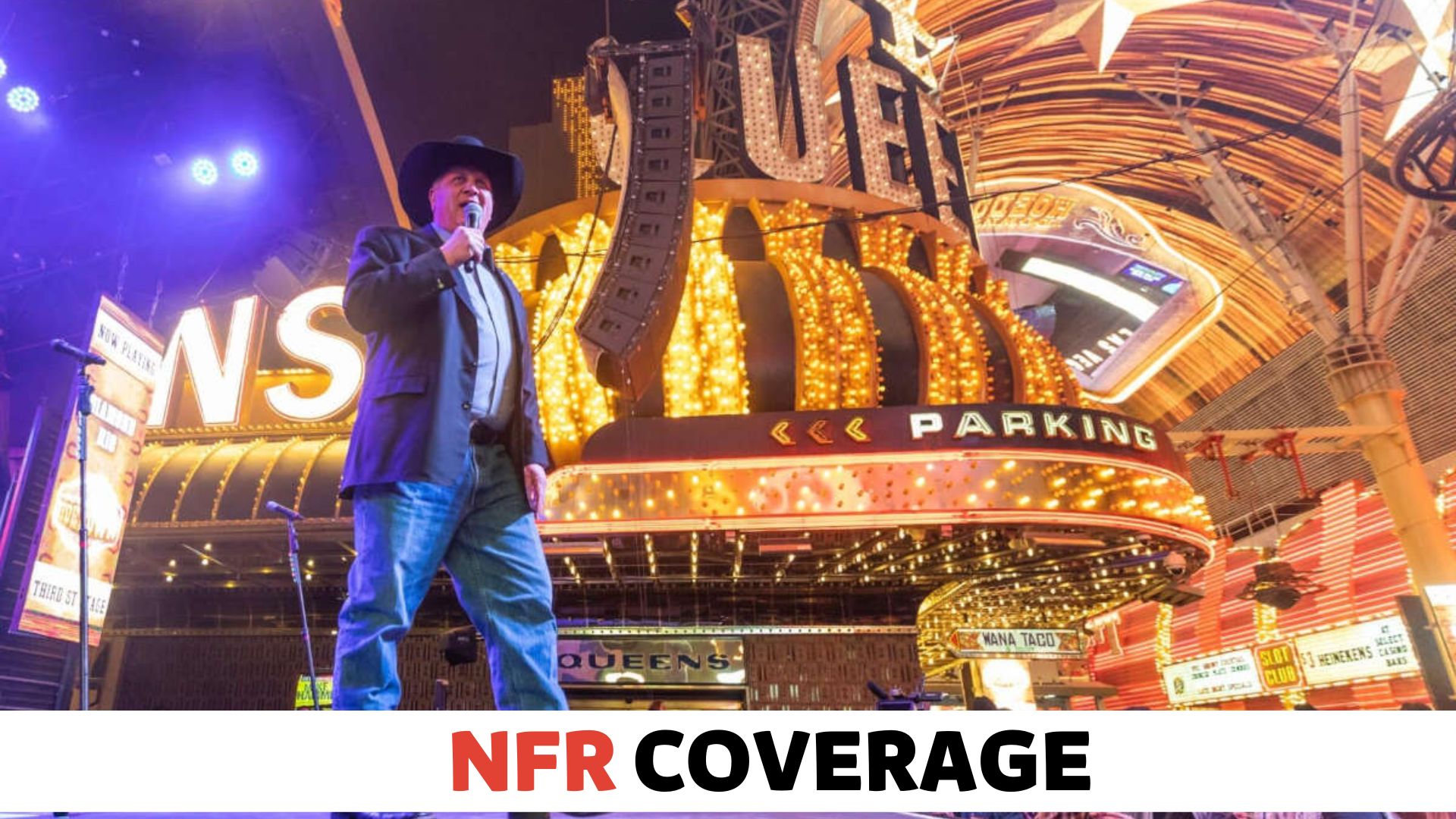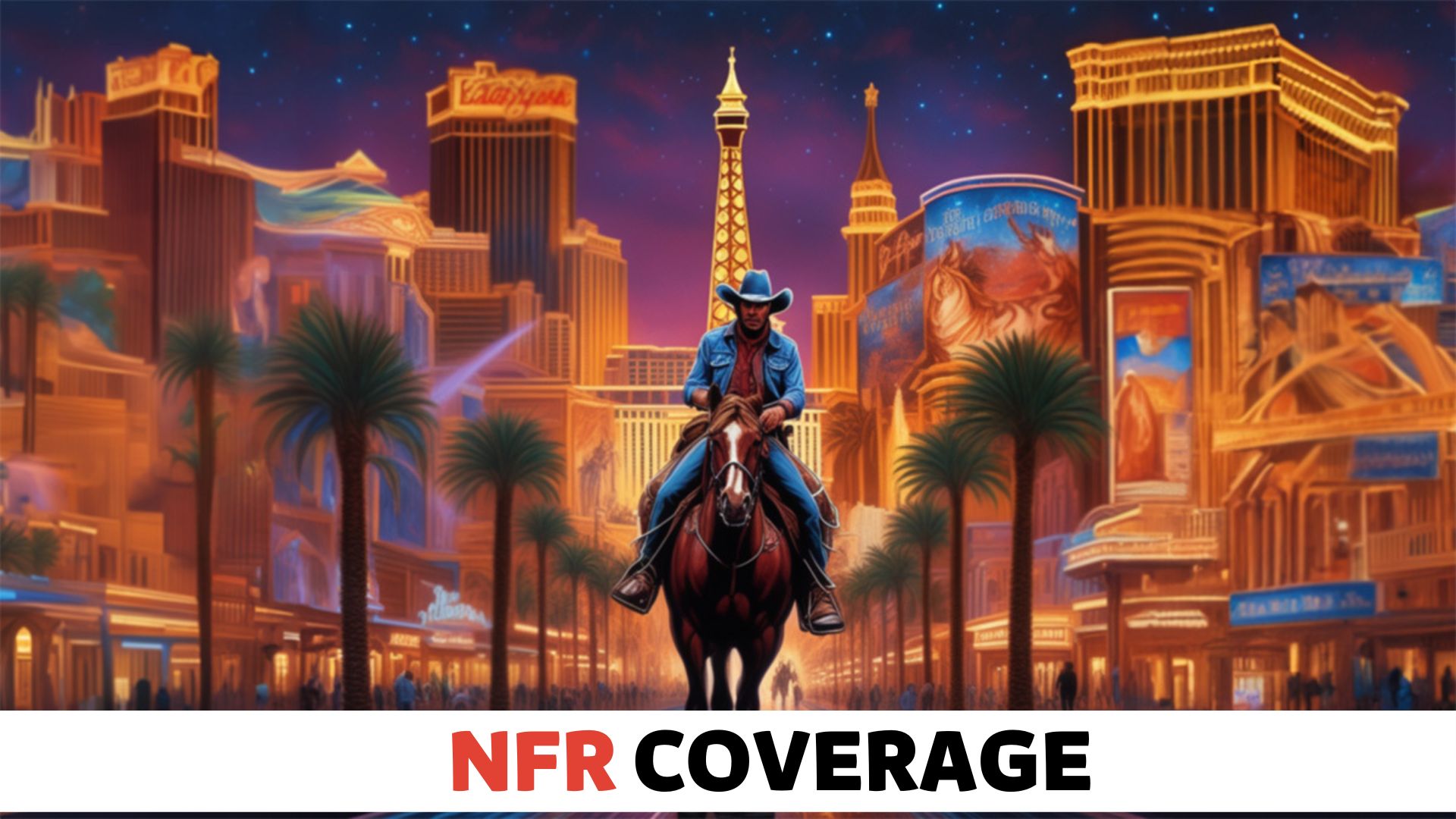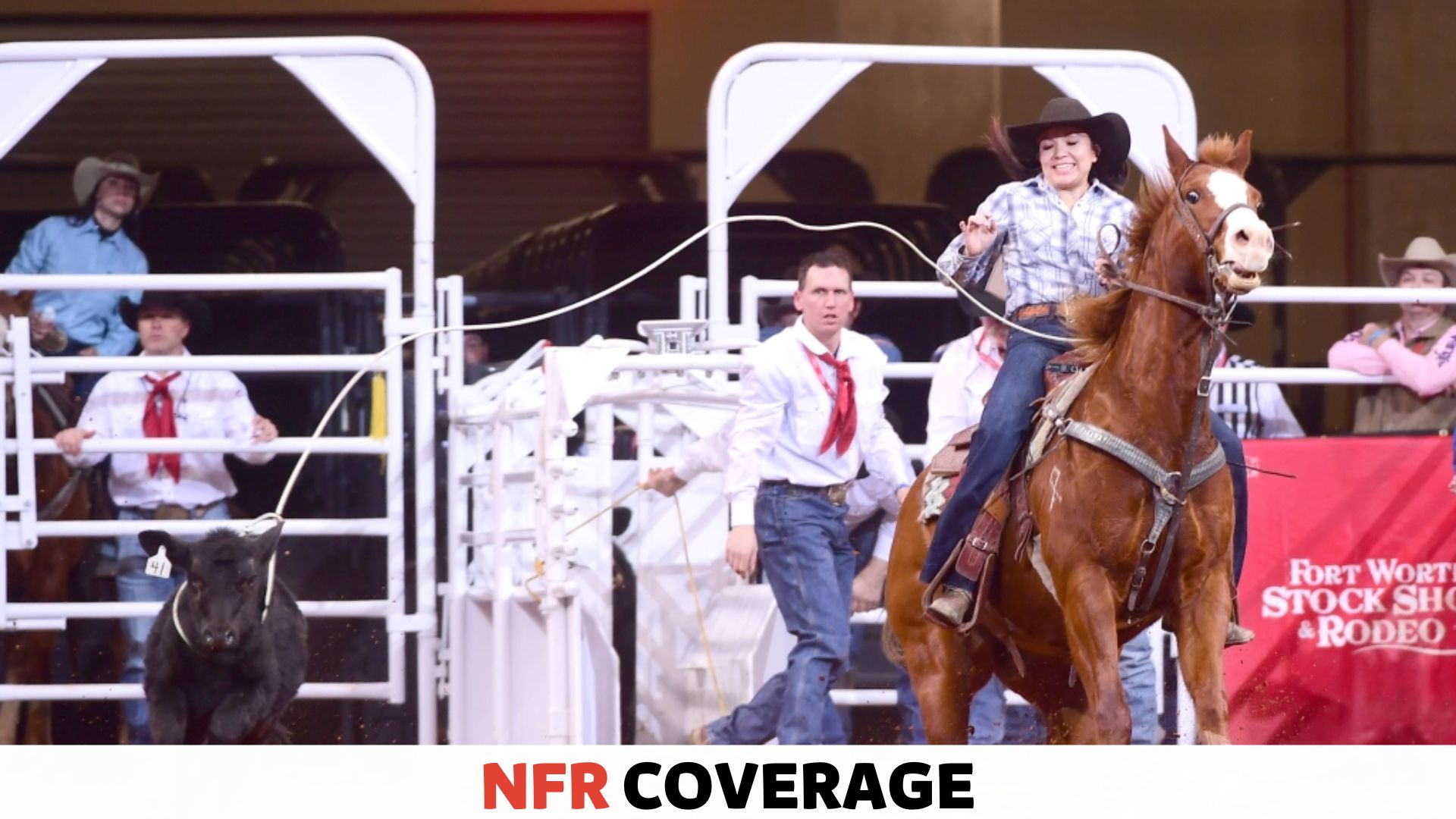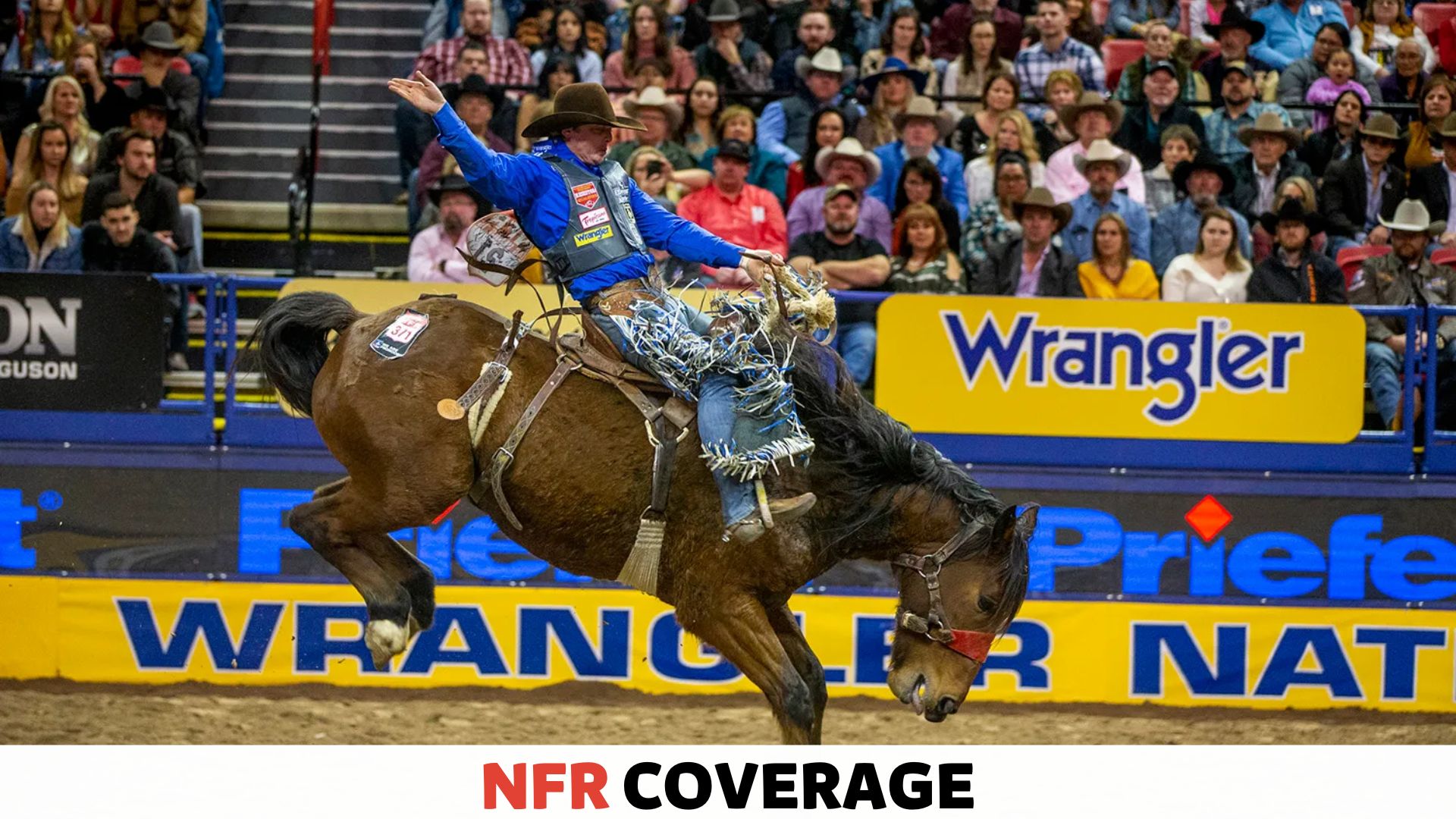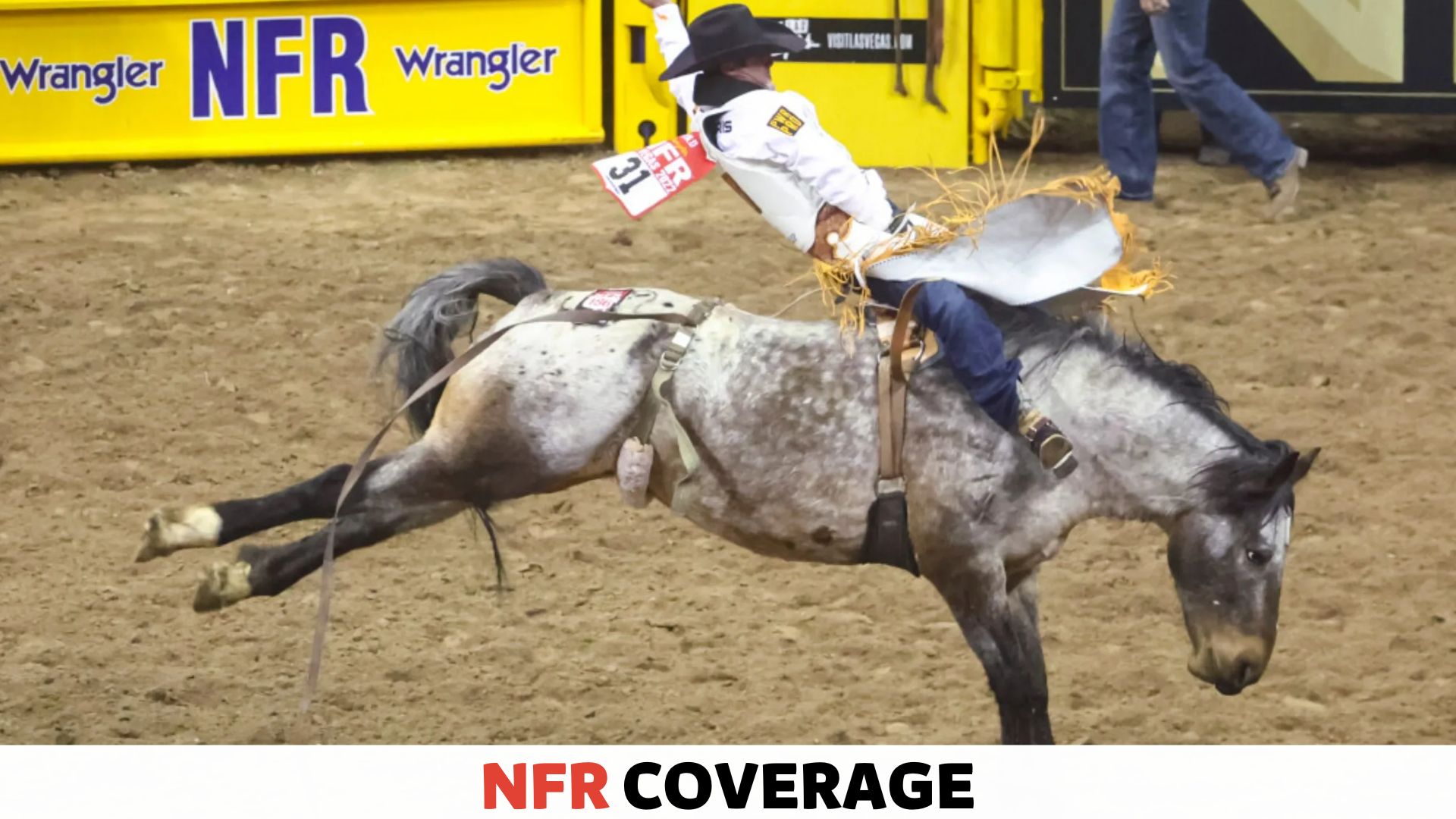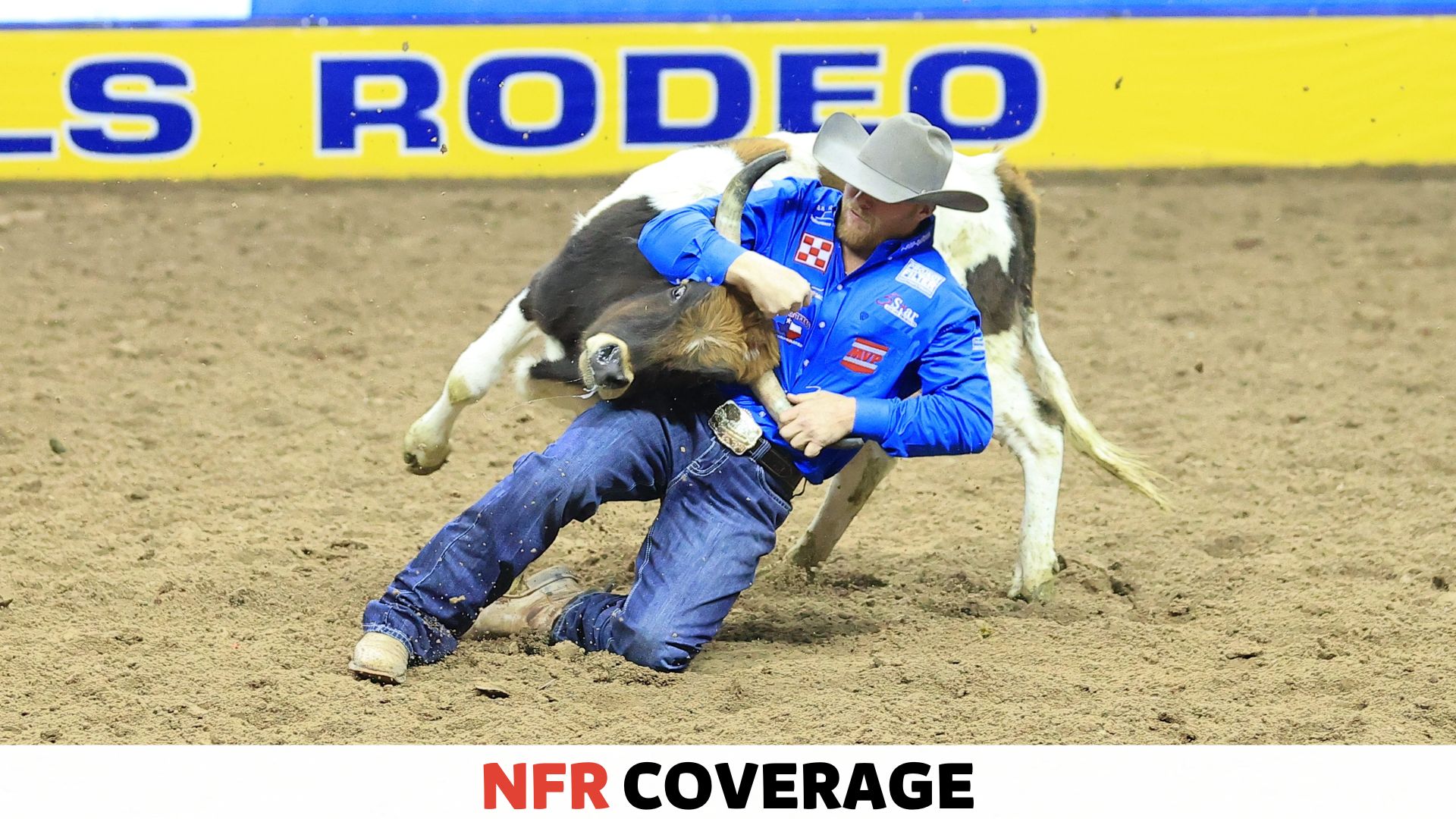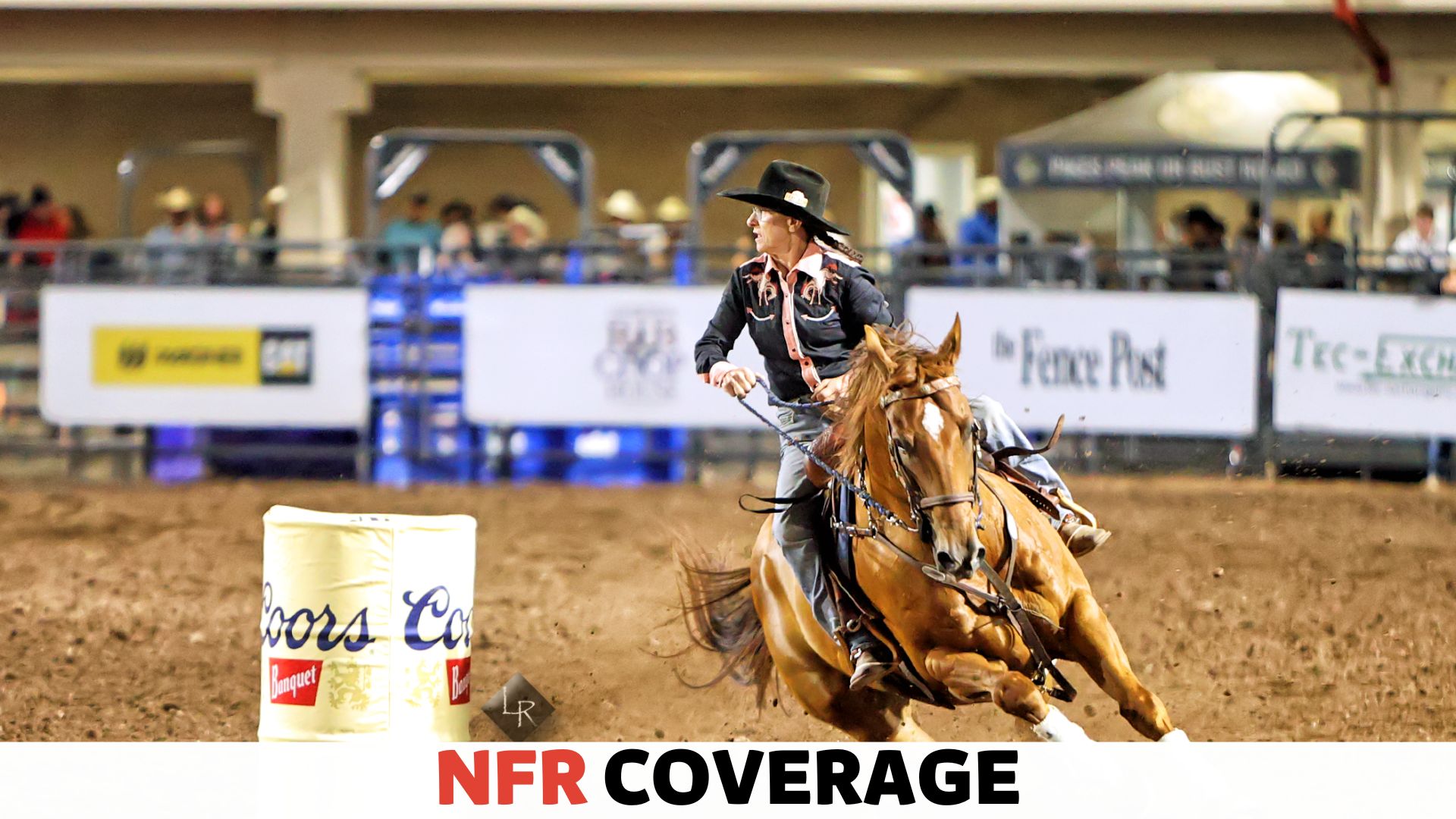The main difference between PBR and NFR is that PBR (Professional Bull Riders) is a bull riding organization focused on individual performances.
At the same time, NFR (National Finals Rodeo) is an event that showcases various rodeo events and disciplines. PBR is known for its high-energy, fast-paced bull riding competitions featuring top riders and ranking systems.
At the same time, NFR is a championship event that brings together top cowboys and cowgirls competing in disciplines like bull riding, roping, barrel racing, and more.
PBR and NFR attract large audiences and have unique characteristics and fan bases. Now, let’s dive deeper into the specifics of both organizations and explore what makes them stand out in rodeo and bull riding.
Understanding the Rodeo World
Overview of Rodeo Events and Competitions
Rodeo, a thrilling sport that originated in the Old West, showcases the skills and bravery of cowboys and cowgirls as they engage in various events and competitions. Rodeo events test the strength, agility, and control of the rider and the animal.
From bareback riding to steer wrestling, team roping to barrel racing, each event brings unique challenges and exhilaration to the rodeo arena.
Importance of Professional Bull Riders (PBR) and National Finals Rodeo (NFR)
When it comes to professional rodeo, two prominent organizations have taken center stage – Professional Bull Riders (PBR) and National Finals Rodeo (NFR).
These organizations have revolutionized the rodeo world, attracting a global audience and increasing competition. Let’s take a closer look at the importance of each organization:
The Professional Bull Riders (PBR)
The PBR is dedicated to the thrilling and often jaw-dropping sport of bull riding. As the name suggests, bull riding is the flagship event for this organization.
Talented cowboys mount the back of an immense and powerful bull, aiming to stay atop for a grueling 8 seconds.
The PBR’s high-energy events are known for pushing the limits of human and animal athleticism as the riders and the bulls engage in a fierce battle of strength and determination.
With a fast-paced format and recognizing the top bull riders worldwide, the PBR has successfully garnered a massive fan base, introducing many to rodeo’s rugged and electrifying world.
The National Finals Rodeo (NFR)
The NFR represents the pinnacle of rodeo excellence and acts as the Super Bowl of rodeo events. Held annually in Las Vegas, this prestigious competition brings together the top rodeo riders in various disciplines, providing an ultimate showcase of talent and grit.
With a range of events like saddle bronc riding, tie-down roping, and steer wrestling, the NFR highlights the diverse skill set of rodeo athletes.
Each year, cowboys and cowgirls compete fiercely for the coveted world championship titles, solidifying their place as the best in their respective disciplines.
The NFR not only rewards the individual performances of skilled riders but also celebrates the rodeo’s rich heritage and spirit.
History of PBR and NFR
Understanding the history behind the Professional Bull Riders (PBR) and the National Finals Rodeo (NFR) helps paint a vivid picture of these popular and adrenaline-filled events.
The PBR and the NFR have significantly shaped the world of professional bull riding and rodeo competitions.
Evolution and Origins of PBR
The Professional Bull Riders, commonly known as PBR, emerged in the early 1990s as a revolution in bull riding.
Unlike traditional rodeos, where multiple events took place, PBR’s founders sought to establish a single, stand-alone sport focused solely on bull riding. With this vision in mind, the PBR was founded in 1992 by 20 bull riders.
The goal was to give bull riders a platform to showcase their skills, athleticism, and courage in the face of formidable opponents – the bulls.
This groundbreaking concept of bull riding as a standalone sport attracted a wide audience, elevating the PBR to new heights of popularity.
The PBR adopted a format based on head-to-head competition, where riders would attempt to ride the bull for eight seconds while showcasing their control, balance, and technique.
The riders’ performances are evaluated by expert judges, who assess both the rider and the bull’s performance, providing a fair and exhilarating competition.
Development and Timeline of NFR
The National Finals Rodeo, known as NFR, has a longer history dating back to 1959. The NFR was born to celebrate the skills and traditions of rodeo cowboys in a prestigious and competitive setting. With this goal in mind, the Rodeo Cowboys Association (RCA) – now known as the Professional Rodeo Cowboys Association (PRCA) – created the NFR.
In its early years, the NFR faced challenges in gaining widespread recognition and establishing itself as the premier rodeo event in the world.
However, through dedication, determination, and unwavering passion for the sport, the NFR gradually gained momentum, captivating audiences with its thrilling rodeo events, including bull riding, steer wrestling, barrel racing, and more.
The NFR’s prominence grew steadily over the years, and by the 1980s, it had firmly solidified its position as the premier championship event for professional rodeo cowboys and cowgirls.
The prestigious event showcases the top 15 contestants in each rodeo discipline, all competing for the coveted world champion title.
Rodeo Event Formats
Rodeo events have gained immense popularity over the years, captivating audiences with their thrilling displays of athleticism and cowboy skills.
The two most prominent rodeo events, Professional Bull Riders (PBR) and National Finals Rodeo (NFR) might seem similar at first glance, but they have distinctive features that set them apart.
One of the key factors that differentiate these events is their unique rodeo event formats.
Let’s delve into the distinct characteristics of PBR and NFR events to understand the contrasting experiences they offer.
Distinctive Features of PBR Events
Professional Bull Riders events have features that make them stand out in rodeo. Here are some key characteristics of PBR events:
- Focus on bull riding: PBR events primarily revolve around the daring sport of bull riding. This adrenaline-pumping discipline showcases the skills of bull riders as they attempt to stay on a bucking bull for a full 8 seconds.
- Competitive format: PBR events consist of multiple rounds where riders compete against each other for the highest scores. The judges evaluate riders’ performances based on style, balance, and control, rewarding them with scores between 0 and 100.
- Top-ranked riders: The PBR attracts the best bull riders worldwide, creating an elite competition featuring the most talented athletes.
- Bucking bulls: PBR events showcase top-tier bucking bulls known for their strength, agility, and ferocity. These superb animal athletes are matched with equally skilled riders, resulting in an exhilarating battle of wits and strength.
- Circuit-based: PBR events are part of a circuit system, where riders accumulate points throughout the season to qualify for the ultimate event, the PBR World Finals.
Key Characteristics of NFR Events
On the other hand, the National Finals Rodeo has unique features that make it a coveted event among rodeo enthusiasts. Here are some key characteristics of NFR events:
- Multi-disciplinary: NFR covers various rodeo events, including saddle bronc riding, bareback riding, steer wrestling, team roping, tie-down roping, barrel racing, and bull riding. This diverse lineup showcases the versatility and skills of rodeo athletes.
- Season finale: The NFR serves as the culmination of the rodeo season, where the top-ranked cowboys and cowgirls in each event compete for the coveted world championship title.
- Prize money: The NFR offers substantial prize money to the winners, making it a financially rewarding event for the competing athletes.
- Traditional rodeo: NFR events embrace the traditional roots of rodeo, honoring the heritage and legacy of the sport. From classic horsemanship to roping and riding skills, the NFR showcases the timeless art of cowboy athleticism.
- Ten consecutive days: Unlike other rodeo events, the NFR spans an impressive ten consecutive days, providing ample opportunities for fans to witness their favorite athletes in action.
Competitors and Participants
When it comes to the world of rodeo sports, two prestigious events that attract top-notch competitors and participants are the Professional Bull Riders (PBR) and the National Finals Rodeo (NFR). While both events share the common goal of showcasing the talents of rodeo athletes and cowboys, they have distinct differences that set them apart.
In this section, we will explore the profiles of PBR bull riders and highlight notable rodeo athletes and cowboys in the NFR.
Profiles of PBR Bull Riders
PBR has gained immense popularity over the years, captivating audiences with its adrenaline-pumping bull riding competitions. These fearless athletes display exceptional courage and skill as they attempt to ride and conquer some of the world’s most challenging and ferocious bulls.
Here are the profiles of some prominent PBR bull riders:
- Justin McBride: With two PBR World Championships under his belt, Justin McBride is considered one of the greatest bull riders in PBR history. His determination and resilience made him a force to be reckoned with in the arena.
- J.B. Mauney: Known for his fearless approach, J.B. Mauney holds the record for the most career earnings in PBR. His consistency and ability to stay on the bull for the full 8 seconds have earned him numerous accolades and a devoted fanbase.
- Mike Lee: A veteran in the sport, Mike Lee has repeatedly proven his mettle. His relentless pursuit of excellence and his unparalleled determination make him an inspiration for aspiring bull riders.
These bull riders and several others showcase their immense talent and sheer bravery in each PBR event, thrilling spectators with their electrifying rides.
Notable Rodeo Athletes and Cowboys in NFR
On the other hand, the National Finals Rodeo (NFR) is the most prestigious rodeo event in the world, attracting top rodeo athletes and cowboys from different disciplines.
It features a wide range of events, including saddle bronc riding, bareback riding, steer wrestling, and team roping.
Let’s take a look at some notable rodeo athletes and cowboys who have left an indelible mark in the history of NFR:
- Trevor Brazile: A true legend in the rodeo world, Trevor Brazile has earned an impressive 25 world titles across various events. His versatility and consistent performance have made him a revered figure in the NFR arena.
- Bobby Mote: Known for his remarkable talent in bareback riding, Bobby Mote has secured four world championships in the event. His balance, finesse, and ability to synchronize with the moving horse have mesmerized audiences worldwide.
- Joe Beaver: Renowned for his exceptional skills in team roping, Joe Beaver has clinched eight world titles in the event. His precision, timing, and ability to work seamlessly with his partner make him one of the greatest team ropers in NFR history.
These remarkable individuals and many others have graced the NFR stage, showcasing the epitome of talent, dedication, and passion for rodeo sports.
Scoring Systems and Judging Criteria
How PBR Events Are Scored and Judged
In professional bull riding (PBR) and the National Finals Rodeo (NFR), the scoring systems and judging criteria are crucial in determining the winner. While both sports involve daredevil riders taking on powerful bulls, they have unique approaches to scoring and judging that set them apart.
Let’s dive into the details of how PBR events and NFR differ in terms of their scoring systems and judging criteria.
Unique Scoring System and Criteria for NFR
When it comes to scoring in the PBR, the judging is based on a point system. Each rider can earn up to 100 points based on their performance.
The score is determined by combining the rider’s ability to stay aboard the bull for a full eight seconds and how well they handle the bull during that time. The judges consider the rider’s control, difficulty, and style while riding a bull.
On the other hand, the National Finals Rodeo (NFR) has a different scoring system. In the NFR, the riders compete in various events such as bareback riding, saddle bronc riding, and bull riding. Each event has its unique criteria that the judges focus on.
For example, in bareback riding, the rider’s spurring technique and the horse’s bucking action are considered for scoring. In contrast, the rider’s ability to control the horse’s movements is crucial in saddle bronc riding.
To keep the scoring fair and consistent, the NFR uses a panel of judges who carefully evaluate each competitor’s performance. They consider elements such as technique, control, and degree of difficulty to determine the final score.
This ensures that the riders are evaluated on the specific criteria for each event, giving them a fair chance to showcase their skills and talent.
Differences in Bull Riding Equipment
When it comes to bull riding, two major events stand out: the Professional Bull Riders (PBR) and the National Finals Rodeo (NFR). While both showcase the thrilling sport of bull riding, several key differences set them apart.
One important distinction lies in the equipment used during these events.
Let’s delve into the specifics and explore the differences in bull riding equipment between PBR and NFR competitions.
Equipment Used in PBR Bull Riding Events
In PBR events, the focus is primarily on the rider’s skill and the bull’s performance. Consequently, the equipment used in PBR bull riding is designed to maximize rider safety while maintaining fairness and providing a challenging experience.
Here are the key components of the bull riding equipment used in PBR events:
- Bull Rope: A bull rope is a specialized rope that the rider uses to secure himself to the bull during the ride. It consists of a braided rope with a handle and a bell attached to one end. The rider wraps the rope around his hand to secure his grip and balance.
- Riding Glove: A sturdy riding glove is an essential piece of equipment that offers the rider a firm grip on the bull rope, ensuring better control and stability throughout the ride.
- Protective Vest: Safety is a paramount concern in PBR events. Riders wear protective vests made of durable materials that absorb and disperse the impact force in case of a fall or impact from the bull.
- Helmet: To safeguard against potential head injuries, riders must wear helmets specifically designed for bull riding. These helmets are constructed with added padding and shock absorption materials.
Variations in Equipment for NFR Bull Riding Competitions
Unlike the PBR, where bull riding is the main focus, the NFR encompasses multiple rodeo events, including bull riding. As a result, the equipment used in NFR bull riding competitions may differ slightly.
Here are some notable variations in the equipment:
- Bull Rope: Similar to the PBR, riders in NFR events also use bull ropes. However, the length and thickness of the bull rope may vary depending on the rider’s preference.
- Riding Glove: While riding gloves are a common sight in both PBR and NFR events, riders in NFR may opt for gloves with different materials or designs tailored to their individual preferences.
- Protective Vest: Safety is of utmost importance in all rodeo events, including NFR bull riding; riders wear protective vests designed to absorb and lessen the impact force, much like those used in PBR bull riding.
- Helmet: Like in PBR events, helmets are mandatory in NFR bull riding competitions. These helmets protect the rider’s head and are built to withstand the rigors of bull riding.
Prizes and Rewards
When it comes to professional rodeo competitions, two of the most prestigious events are the Professional Bull Riders (PBR) and the National Finals Rodeo (NFR).
These events attract top-notch cowboys and cowgirls from all over the world who showcase their skills and bravery.
While both PBR and NFR offer thrilling rodeo action, there are notable differences in various aspects, including the prizes and rewards they offer to their respective champions.
Rewards and Winnings for PBR Champions
The PBR is solely dedicated to bull riding and is widely regarded as the premier bull riding organization globally. PBR hosts various events throughout the year, culminating in the ultimate PBR World Finals showdown.
PBR champions are handsomely rewarded for their exceptional performances throughout the season.
The rewards for PBR champions include:
- A substantial cash prize
- A prestigious championship buckle
- A custom-made PBR championship ring
- Endorsement and sponsorship opportunities
- Recognition as one of the best bull riders in the world
Prize Structure and Incentives for NFR Winners
The National Finals Rodeo is a multi-discipline rodeo event encompassing competitions such as bull riding, bareback riding, steer wrestling, and more. The NFR is the pinnacle of professional rodeo and attracts top riders in each discipline.
The prizes and incentives for NFR winners are structured differently based on the specific event.
Here is a breakdown of the prize structure and incentives for NFR winners:
| Event | Prize Money | Buckles | Custom Saddles | Recognition |
|---|---|---|---|---|
| Bareback Riding | A substantial cash prize | A customized silver NFR belt buckle | A custom-made saddle | Recognition as the NFR Bareback Riding Champion |
| Steer Wrestling | A substantial cash prize | A customized silver NFR belt buckle | A custom-made saddle | Recognition as the NFR Steer Wrestling Champion |
| Bull Riding | A substantial cash prize | A customized silver NFR belt buckle | A custom-made saddle | Recognition as the NFR Bull Riding Champion |
In addition to the cash prizes and custom rewards, NFR winners also gain recognition as the best in their respective disciplines. This recognition opens doors for endorsement deals, sponsorships, and the opportunity to solidify their place in rodeo history.
Popularity and Fan Engagements
When it comes to professional bull riding, two championships stand out: PBR (Professional Bull Riders) and NFR (National Finals Rodeo). Each of these competitions has its unique characteristics that attract fans from around the world.
In this section, we will discuss the impact of PBR on the mainstream popularity of bull riding and the fan engagement and experience at NFR events.
Impact of PBR on Mainstream Popularity of Bull Riding
Bull riding has always been a thrilling and captivating sport, but the advent of PBR propelled it into the mainstream. With its innovative event formats, top-notch production, and remarkable marketing strategies, PBR has attracted a massive following of fans and sponsors alike.
The organization’s dedication to creating a fan-friendly atmosphere has allowed bull riding to reach a broader audience than ever before.
PBR events are meticulously crafted to provide an incredible experience in person and through media coverage. The heart-pounding action of cowboys riding massive bulls for a set duration is hard to resist.
The organization’s focus on high-quality production values and broadcasting them to television networks has brought the excitement of bull riding into living rooms across the globe.
As a result, more and more people are tuning in to witness these riders’ breathtaking athleticism and courage.
PBR’s dedication to fan engagement has also contributed to its popularity. The organization goes above and beyond to create an immersive experience for spectators.
From interactive fan zones to meet-and-greets with riders, PBR events ensure fans feel a deep connection with the sport and its athletes.
The energetic atmosphere, pulsating music, and enthusiastic commentary make attending a PBR event a truly unforgettable experience.
Fan Engagement and Experience At NFR Events
NFR, on the other hand, holds a special place in the hearts of rodeo enthusiasts. This prestigious championship event brings together the best rodeo cowboys and cowgirls to compete for coveted titles.
The fan engagement and experience at NFR events are second to none, providing a unique blend of tradition, history, and thrilling rodeo action.
Attending an NFR event is like stepping into a time capsule, immersing oneself in the rich heritage of rodeo. The electric atmosphere at the Thomas & Mack Center in Las Vegas, the venue for NFR, resonates with the passion and excitement of die-hard rodeo fans.
From the iconic grand entry to the crowd’s cheers as riders navigate through intense competitions, NFR events deliver an unparalleled fan experience.
Moreover, NFR events offer various fan-friendly activities and engagements. Fans can enjoy live music performances, autograph sessions with their favorite rodeo stars, and even glimpse the Western lifestyle at the Cowboy Christmas Gift Show.
These elements contribute to the overall experience and make attending NFR a memorable event for fans of all ages.
PBR and NFR have played significant roles in popularizing bull riding and capturing the hearts of fans worldwide. PBR’s innovative event formats and fan engagement efforts have brought bull riding to the mainstream, while NFR events provide a unique blend of tradition and thrilling rodeo action.
Whether you prefer the high-energy atmosphere of PBR or the rich heritage of NFR, both championships offer incredible opportunities for fans to engage with the sport they love.
Frequently Asked Questions
Do PBR Riders Compete in NFR?
Yes, PBR riders do compete in the NFR rodeo.
What is the Difference Between a Rodeo and a PBR?
A rodeo typically includes bull riding, barrel racing, and roping. PBR, which stands for Professional Bull Riders, focuses on bull riding exclusively and features top-ranked riders. The difference lies in the various events and the exclusive focus on bull riding in PBR.
What is the Difference Between PRCA and NFR?
PRCA and NFR are both professional rodeo associations. PRCA stands for Professional Rodeo Cowboys Association, while NFR stands for National Finals Rodeo. PRCA is the main organization that governs rodeo competitions, and NFR is an annual championship event where top cowboys and cowgirls compete for titles.
What Does NFR Mean in Rodeo?
The acronym NFR in rodeo stands for the National Finals Rodeo. It is the premier championship event for professional rodeo riders.
What is PBR?
PBR stands for Professional Bull Riders, a well-known rodeo organization showcasing worldwide bull riding events.
Conclusion
PBR and NFR may have similarities, such as featuring professional cowboys and showcasing incredible rodeo skills. However, competition organizations, events, and even prize money differ. While PBR focuses solely on bull riding, NFR encompasses multiple rodeo disciplines.
Understanding these variations helps fans and participants appreciate the unique experiences offered by both PBR and NFR.
So, whether you prefer the intense thrill of bull riding or the diverse excitement of all rodeo events, PBR and NFR have something extraordinary to offer.








